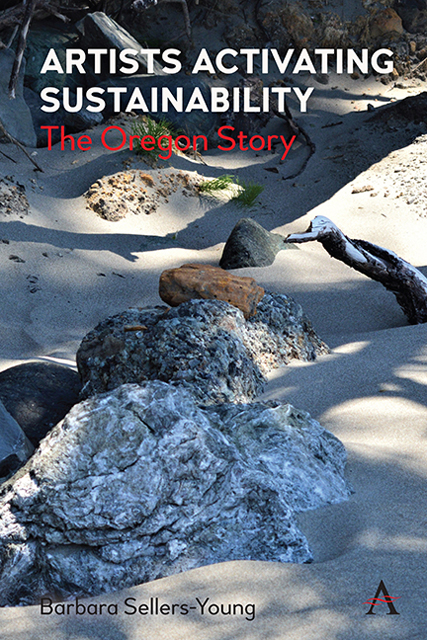Book contents
- Frontmatter
- Dedication
- Contents
- Acknowledgments
- List of Figures
- Introduction: Art, Environment and Metaphor
- 1 Environmental Activism, Arts and the Land of Eden Landscape One: High Desert Basin and Range
- Landscape One High Desert Basin and Range
- Landscape Two Columbia Gorge and Plateau
- Landscape Three Cascade Range
- Landscape Four The Willamette Valley
- Landscape Five Rogue River Valley
- Landscape Six Oregon Coast and Coast Range
- Index
Landscape One - High Desert Basin and Range
Published online by Cambridge University Press: 10 January 2023
- Frontmatter
- Dedication
- Contents
- Acknowledgments
- List of Figures
- Introduction: Art, Environment and Metaphor
- 1 Environmental Activism, Arts and the Land of Eden Landscape One: High Desert Basin and Range
- Landscape One High Desert Basin and Range
- Landscape Two Columbia Gorge and Plateau
- Landscape Three Cascade Range
- Landscape Four The Willamette Valley
- Landscape Five Rogue River Valley
- Landscape Six Oregon Coast and Coast Range
- Index
Summary
The desert instructs that if we spend all of our time trying to force our version of things on what is actually taking place to make our tracks (and namesakes) permanent, we will destroy where we live, literally and metaphorically, as well as our chance at experiencing what is commonly referred to as happiness.
Ellen WaterstonLandscape
Lush forests, towering mountains, plenty of rain and misty fog are the general image of Oregon. The High Desert, located primarily in Harney and Malheur Counties, has a total population of less than 50,000 in the 20,125 square miles in which 75 percent of the land is owned by the Federal government. New York Times travel writer Suzanne Carmichael wrote, “Oregon's remote high-desert country is a little-known and remarkably diverse region that covers nearly one-quarter of the state. Wind-seared desert and lush wetlands border stunning geologic formations; pelicans and trumpeter swans fly over pockmarked lava beds, and dry winds sweep through ghost towns where sheepherders used to spend the winter months.”
The terrain of the High Desert was formed by a series of lava flows that consistently erupted from miles-long vents from 10 to 30 million years ago. The consequence is that the area has been consistently pulled westward in a continuing geologic process that eventually causes earthquakes. The result is a series of Basins or valleys separated by mountain Ranges—Alvord Desert to Steens Mountain, Lake Albert to Albert Rim, Summer Lake to Winter Ridge. Divided into a southern region and a northern region, the southwest region is part of the Great Basin and the southeast is the lower Owyhee River watershed. The region averages 15 inches of annual rainfall; the Alvord Desert in southeast Oregon in the shadow of the Steens Mountains receives a bare 7 inches of rain each year (Figure 4).
There are a few places in the High Desert, such as the Jordan Craters lava field, where volcanism occurred as recently as 3,000 years ago. The continuing geological influence of the deep sources of underground heat accounts for the High Desert's geothermal resources, including Alvord Hot Springs, Lakeview's Hunter Hot Springs, as well as those located near Vale, Oregon.
- Type
- Chapter
- Information
- Artists Activating SustainabilityThe Oregon Story, pp. 43 - 48Publisher: Anthem PressPrint publication year: 2022

